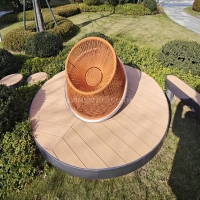Welcome to the website for landscape facilities products and knowledge.
How do the designs account for accessibility for individuals with disabilities?
Accessibility in design ensures that individuals with disabilities can navigate, understand, and interact with environments, products, and services seamlessly. Modern designs incorporate universal design principles, which aim to create spaces and tools usable by everyone, regardless of ability.
Key strategies include:
1. Physical Accessibility: Ramps, elevators, and widened doorways accommodate wheelchair users, while tactile paving aids those with visual impairments.
2. Sensory Considerations: Braille signage, audio descriptions, and high-contrast visuals support individuals with visual or hearing disabilities.
3. Digital Inclusivity: Websites and apps follow WCAG guidelines, featuring screen reader compatibility, keyboard navigation, and adjustable text sizes.
4. Assistive Technology Integration: Designs often include compatibility with hearing aids, speech-to-text software, and other adaptive devices.
By adhering to ADA compliance and embracing inclusive design, architects and developers create equitable spaces that empower all users. Accessibility isn’t an afterthought—it’s a foundational pillar of thoughtful, human-centered design.
Related search:

Recommendation
Swivel chair-Specialty steel structure woven rattan leisure chair with rotatable design